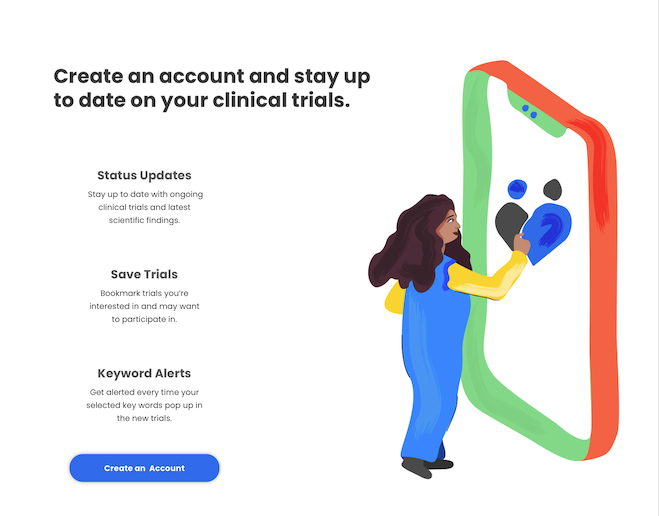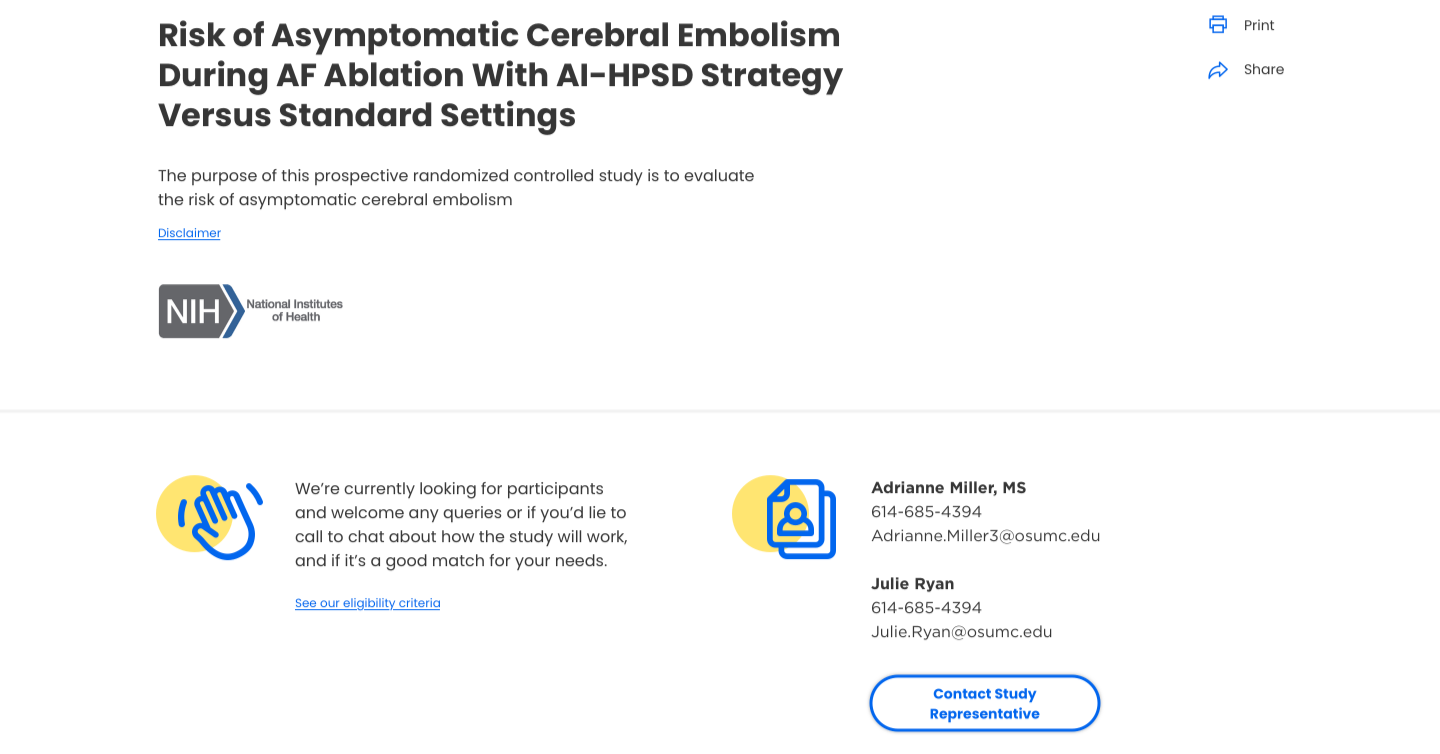Wondros Health Clinical Trials Guide
Transforming Clinical Trial Access and Recruitment
Background
Finding and understanding clinical trials has long been a daunting task for patients and their families. The information is often dense, uses clinical language, and is scattered across multiple sources, creating a significant barrier to access and participation.
Wondros Health Clinical Trials Guide set out to solve this problem with an ambitious new digital product. The vision was to create a comprehensive, user-friendly search tool for all registered clinical trials in the United States. In addition, engagement tools, templates and analytics dashboards were designed to support trial teams and managers in their engagement and recruitment efforts.
The ask
To design and launch a new, patient-first digital product that demystifies the complex landscape of clinical trials for the public, establishing Wondros as a leader and innovator in the health research sector.
The biggest challenge was to translate a massive, complex database into an accessible, supportive, and patient-first experience.
Key activities
Generative research and conceptual ideation
UX research (needs matrices, journey mapping, user needs)
Content and data modelling
Information architecture
UX designs and content designs
Proof of concept and beta product UX
UX advisory across workstreams
The mission
Designing for Clarity and Empathy
As a new platform, WONDROS Clinical Trials Finder needed a robust UX strategy from the ground up. We needed to find solutions for two key success criteria:
Accessibility - How could the platform present highly technical information about clinical trials in a way that was easy for any user to understand, regardless of their medical knowledge?
Usability - How could the user interface empower individuals to not only find relevant trials but also confidently assess their eligibility and understand the full implications of participation?
Making the Complex Clear - The success of the product hinged on its ability to be translational—to act as a bridge between the clinical world and the patient seeking hope and options.
Our approach
Our Director of UX worked alongside the Wondros Digital Team from concept to beta product delivery. By meticulously planning every aspect of the user experience, from strategic positioning to final copy, we created a platform that prioritized the user's needs whilst retaining and repackaging all key information about each trial. In parallel, we designed a templated system based on the patient-first designs for trial managers to promote their trials more effectively. This templated product included tools to monitor reach and impact.
User Needs, Journeys & Flows: Journey maps, user requirements and user flows were crafted to capture user needs and flows, ensuring a supportive and logical path through the platform.
UX Strategy & Design: A patient-first UX strategy was developed, focusing on creating a product that met patient needs when searching for and learning about clinical trials for themselves or loved ones. Plain language, empathy, and clarity were core requirements.
A clear and logical structure was designed to organize thousands of trials, making them easily searchable and navigable. The search results and clinical trial pages were designed to be scannable and digestible, with built in glossary functionality to help translate complex technical language.
Search Experience: New types of search tools and aids were designed to help patients find trials they are eligible for, matching their inputs against the screener criteria available for each trial. Search results were designed to be easy-to-use, accessible, meaningful, scannable and able to be easily refined and tailored.
Wireframing & UI Oversight: Low-fidelity wireframes established the core layout and functionality and content design, focusing on usability. This blueprint guided the final UI design and build, ensuring the visual interface was clean, engaging, and aligned with the user-centric strategy.
Outcome and Impacts
WONDROS’s Clinical Trials Finder was launched in 2023. The open access website was available to the public for a year. Its accessible and approachable design system and content design is now packaged as a SaaS for research organisations to use in their outreach and recruitment activities.


